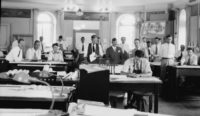Ennead and Rockwell Group Revamp Historic Train-Repair Shop for Nonprofit Feeding New Yorkers in Need

In the 10,000-square-foot repack room, thousands of volunteers will sort and repackage food for distribution throughout the city. Photo © Albert Vecerka/Esto, courtesy Ennead Architects

Located in Sunset Park, Brooklyn, City Harvest's new Food Rescue Center is housed in a cavernous warehouse that served as a train repair shop from 1890 to 1916. Photo © Albert Vecerka/Esto, courtesy Ennead Architects
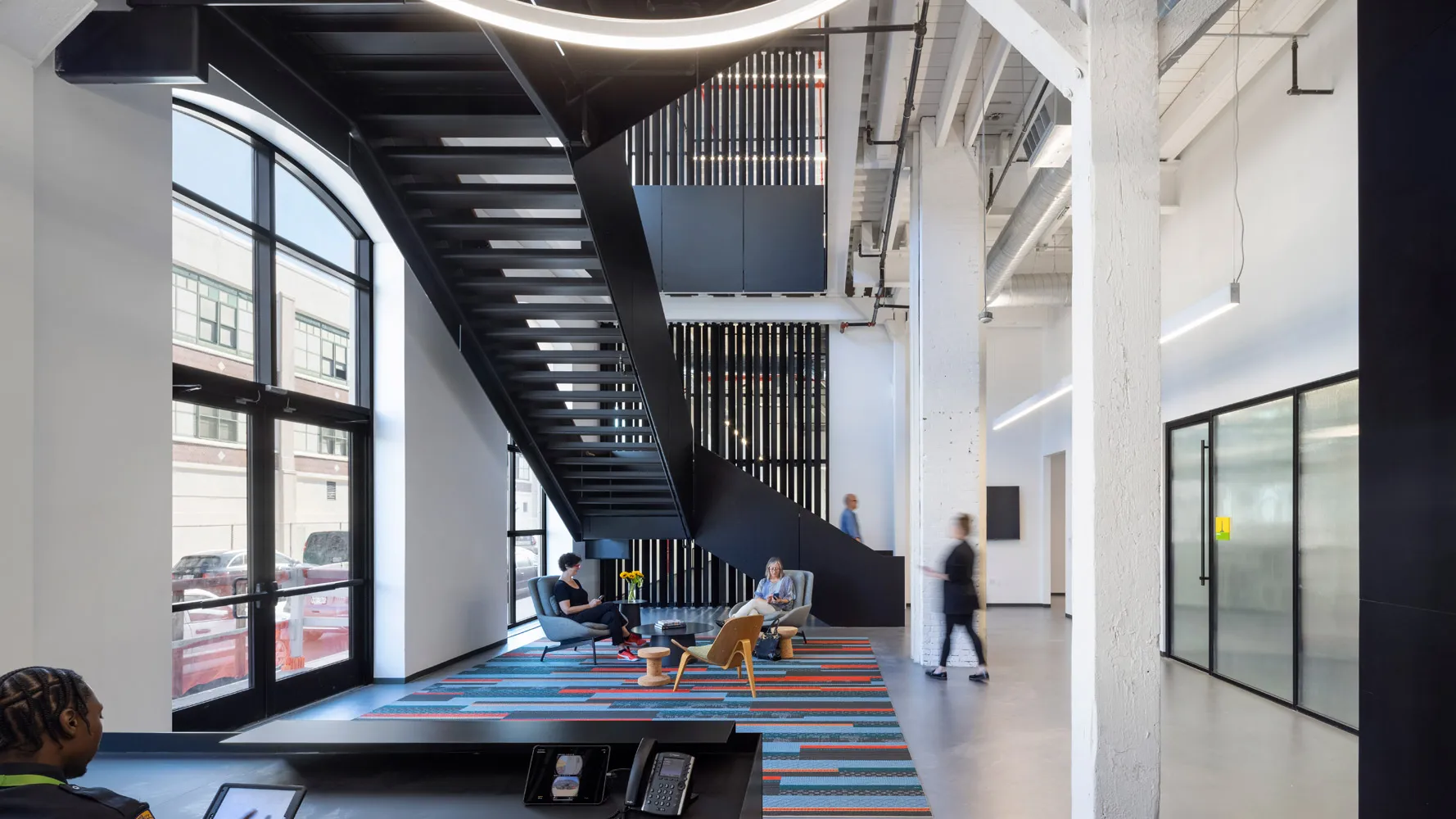
From the staff entrance on 52nd Street, a large steel staircase leads to the second floor. Photo © Albert Vecerka/Esto, courtesy Ennead Architects
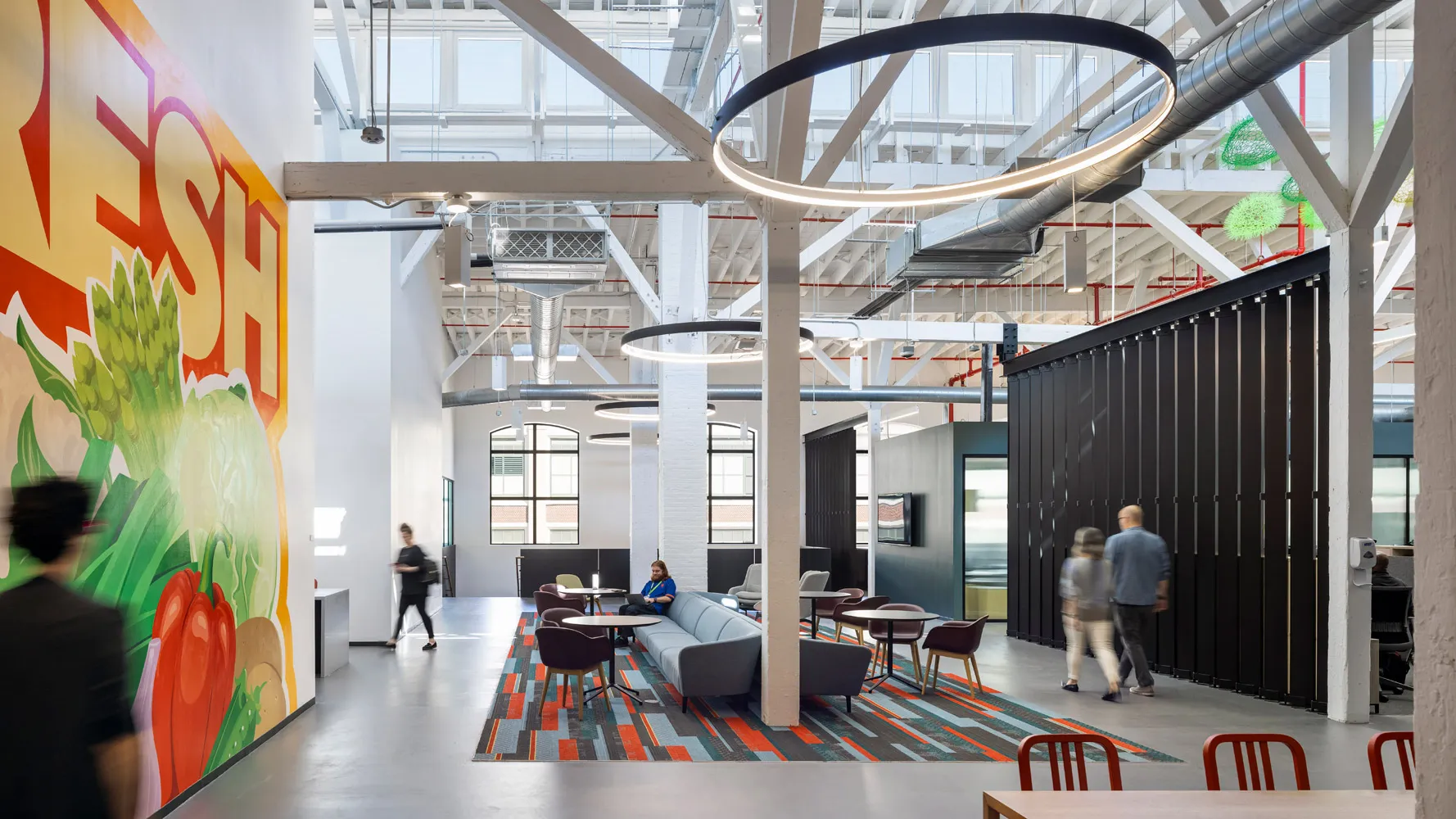
In the common area on the second floor, warehouse workers, administrative staff, and volunteers mingle in a generously-sized kitchen and lounge area. Photo © Albert Vecerka/Esto, courtesy Ennead Architects
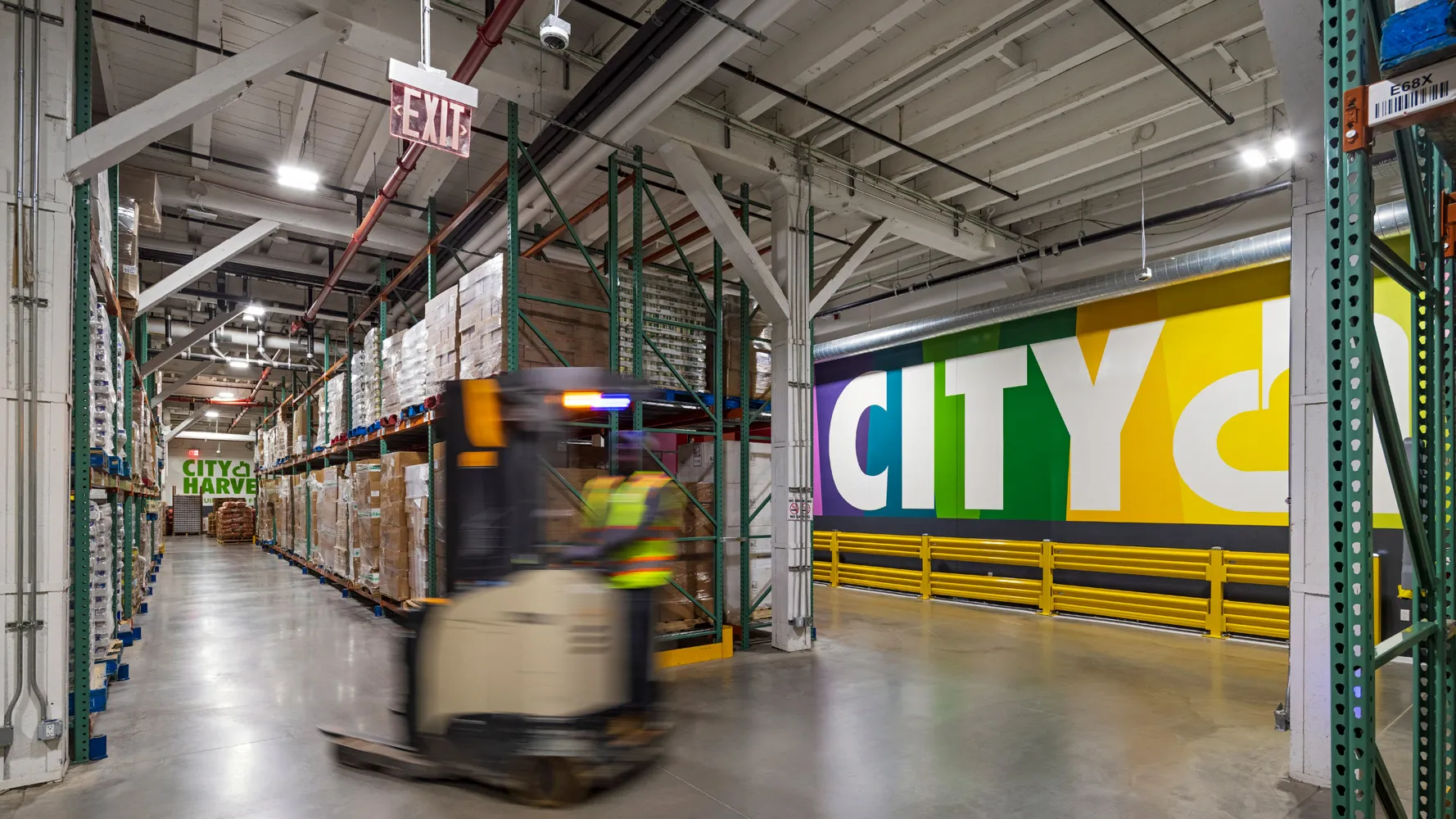
On the ground level, storage and loading space are almost double in capacity compared to the nonprofit's previous warehouse location in Queens. Photo © Albert Vecerka/Esto, courtesy Ennead Architects
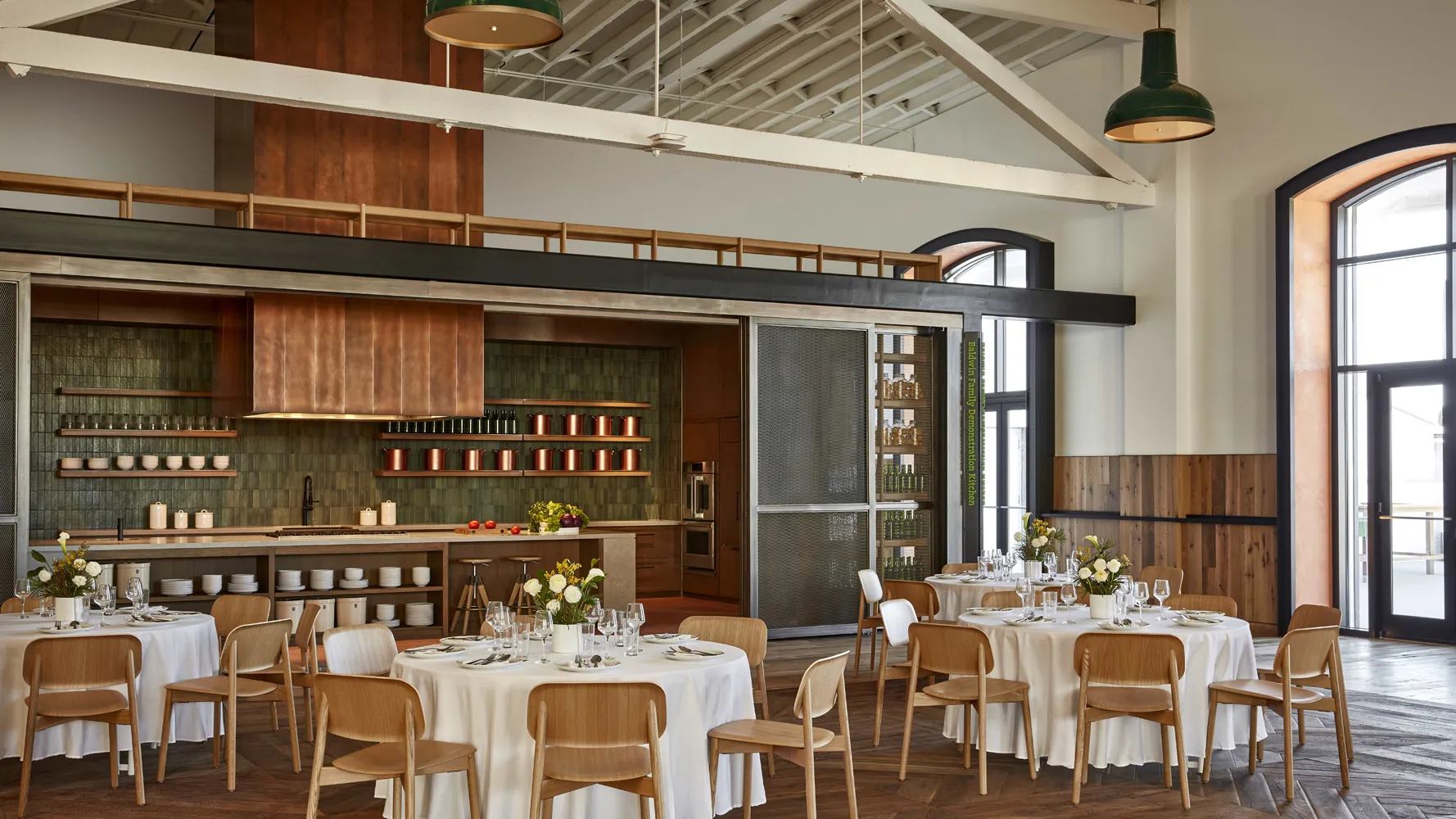
The demonstration kitchen and event space, designed by Rockwell Group, honors both the organization's mission and the neighborhood's industrial heritage with recycled materials and copper accents. Photo © Jason Varney for Rockwell Group
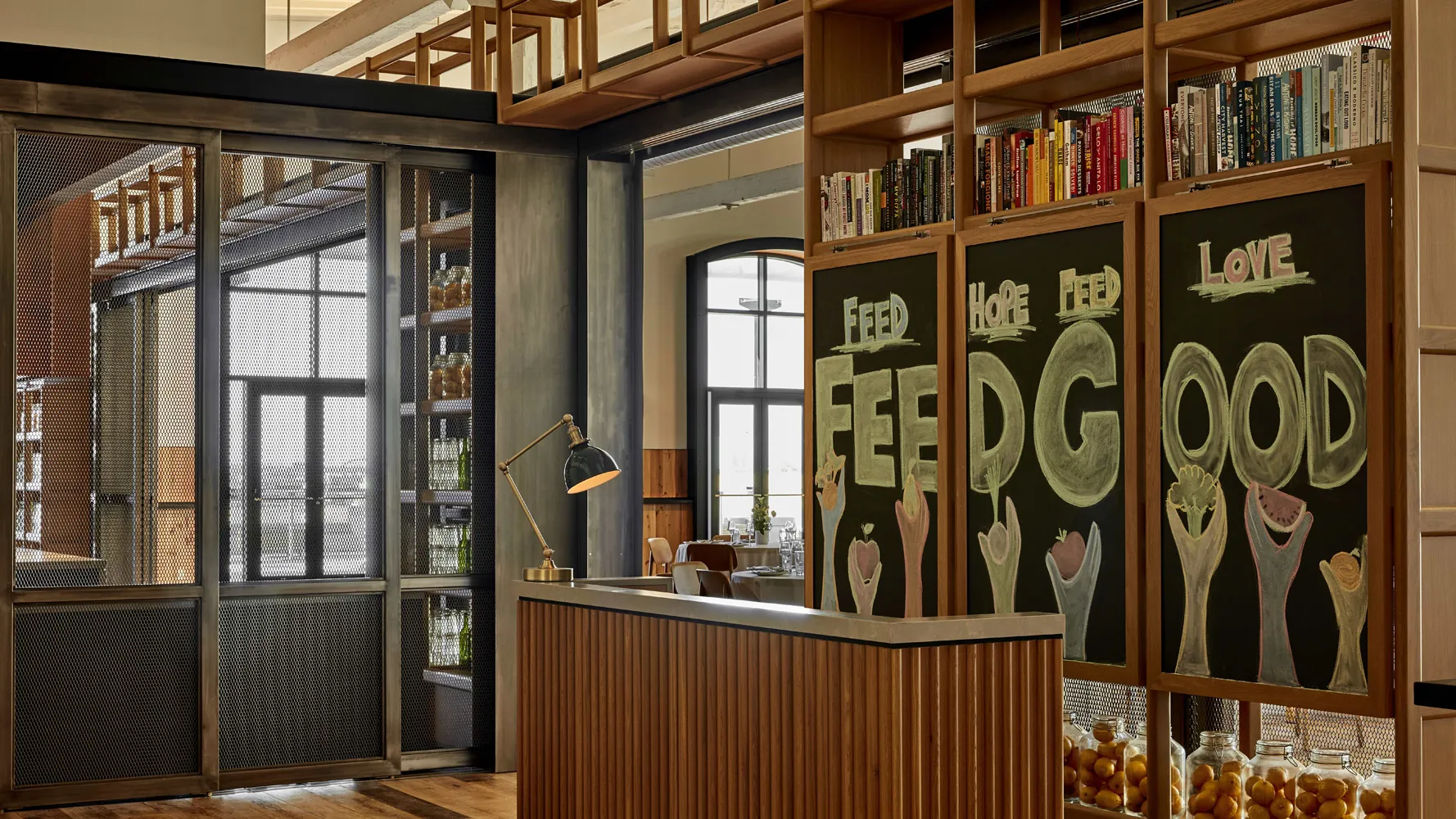
The entry features a custom millwork reception desk and open oak casework for display purposes. Photo © Jason Varney for Rockwell Group







In November, New York-based nonprofit City Harvest debuted the Cohen Community Food Rescue Center, a new headquarters and food recovery hub located just steps from the waterfront in Sunset Park, Brooklyn.
Designed by New York-based Ennead Architects and Rockwell Group in collaboration with Ware Malcomb, the new 150,000-square-foot facility is housed in a 19th-century warehouse originally built as a repair shop for the long-defunct Brooklyn Heights Railroad. Honoring the structure’s original architecture while overhauling its interior to accommodate a diverse program, Ennead transformed the historic industrial space into a LEED Gold–certified building combining warehouse and food distribution operations with administrative offices, which were previously located in separate facilities in Long Island City, Queens, and Manhattan, respectively.
The Cohen Center’s opening marked the 40th year of operations for City Harvest. The largest and oldest organization of its kind in New York City, the lauded charitable organization collects roughly 75 million pounds of excess food from manufacturers, grocers, restaurants, and farms each year. These recovered comestibles are then delivered to New Yorkers in need at soup kitchens and food pantries as well as through community food programs in all five boroughs. Since the onset of the pandemic, the organization notes that monthly visits to food pantries and soup kitchens have increased by 69 percent and continue to rise. The new centralized hub allows the organization to distribute twice as much food than its previous capacity, making it the largest food rescue operation in the country.
Located blocks away from the Brooklyn Army Terminal on the corner of 52nd Street and 2nd Avenue—squarely between Sunset Park’s industrial waterfront and the Gowanus Expressway— the two-story brick building is painted bright white with the organization’s logo emblazoned in large green letters, a graphic language that is repeated throughout the building’s interior along with colorful murals and artworks from local artists.
The loading and storage areas, which take up the bulk of the facility’s ground level, more than doubles the storage capacity of City Harvest’s previous warehouse in Long Island City. Seven docks give the nonprofit’s fleet of 23 trucks access to a temperature-controlled loading area, to and from which employees in forklifts transport food between a dry goods storage area or refrigerated “flex rooms” of varying temperatures. (Ware Malcomb oversaw the design of the logistics spaces and served as architect of record.)

The center incorporates an additional four loading docks to accommodate increased need in the city. Photo © Albert Vecerka, courtesy Ennead Architects
On RECORD’s visit in late January, City Harvest CEO Jilly Stevens pointed out pallets stuffed with fresh fruit and vegetables that had just been unloaded, ready to be whisked upstairs for sorting and repackaging by volunteers.
The expansive floorplan reflects a democratic delineation of space, with some office space sitting shoulder-to-shoulder with loading and storage space on the ground floor. From the employee entrance on 53rd Street, a large steel staircase leads up to the second floor where warehouse workers, volunteers, and administrative employees mingle in a generously sized kitchen and lounge area adjacent to the main office space. On this level, the striking architectural features of the original building, preserved and enhanced by Ennead, are on full display. Most notable are the branching timber support columns and clerestory windows running the length of the building that provides abundant daylighting in the reimagined space. (The windows had been bricked over long before City Harvest acquired the building.)

City Harvest administrative staff in the second floor office space; above them is one of artist Sui Park's hanging sculptures made from recycled zip-ties. Photo © Albert Vecerka, courtesy Ennead Architects
“The building had really good bones,” says Ennead partner Richard Olcott, who led the design team. “There was an original assumption that [City Harvest] was going to want a drop ceiling and do a conventional office—but no one wanted that. A lot of what we did was uncover things and bring the building back to what it once was.”
To subtly divide the various zones of the multi-use space, Ennead incorporated slanted black steel screens, emphasizing an industrial-styled transparency in the spirit of the new center’s uniting of office and warehouse staff (and volunteers) under one roof. The building’s mechanical systems are suspended by thin steel cords at about half the ceiling’s height to ensure decreased energy use to heat and cool the vast space. Other sustainable initiatives include energy efficient lighting, radiant heating and cooling, and electric charging stations for warehouse equipment. A photovoltaic array is also planned for the roof.
At least half of Ennead projects have involved adaptive reuse, estimates Olcott of the James Polshek–founded firm’s portfolio: “Especially living in the biggest urban area in the country, there’s a lot more of that work and a lot less available ground for new buildings.”
The Rockwell Group–designed event space and demonstration kitchen, also on the second level, stands in sleek contrast to the industrial austerity of the rest of the center. Outfitted in warm wood with deep-green metal and terra-cotta accents, Rockwell Group emphasized the use of recycled materials in the design, including reclaimed timber from barns in the Pacific Northwest for the flooring, reconstituted fabric scraps in the carpeting, and furnishings made from recycled plastic milk jugs. Starting this summer, the space will host fundraisers, community gatherings, and cooking demonstrations. The landscaped terrace, which sits atop of the loading dock, offers views of Upper New York Bay and features a David Rockwell–designed metallic green grill that matches the pendant lights hovering over the communal dining area inside.
“City Harvest is more than the food itself, it’s about hospitality, empathy, and making connections, and we really wanted the event space and demonstration kitchen to reflect that," Rockwell told RECORD. “Our design concept was also informed in part by the building itself; the 19th century warehouse provided an incredible blank canvas to design a space for community and celebration. We used humble materials to honor the building’s original patina and the industrial history of Sunset Park.”

A mural by artist Natasha May Platt overlooks the open-air terrace which will host alfresco events come this summer. Photo © Jason Varney for Rockwell Group
On the horizon for the Cohen Center is its “storefront,” a 4,000-square-foot space with an entrance on 2nd Avenue that will serve as City Harvest’s public interface with the surrounding neighborhood. The Sunset Park community will have a role in future programming at the new space.
“They're very conscious of trying to be a good neighbor,” says Olcott, “And Sunset Park is a neighborhood in need too.”


